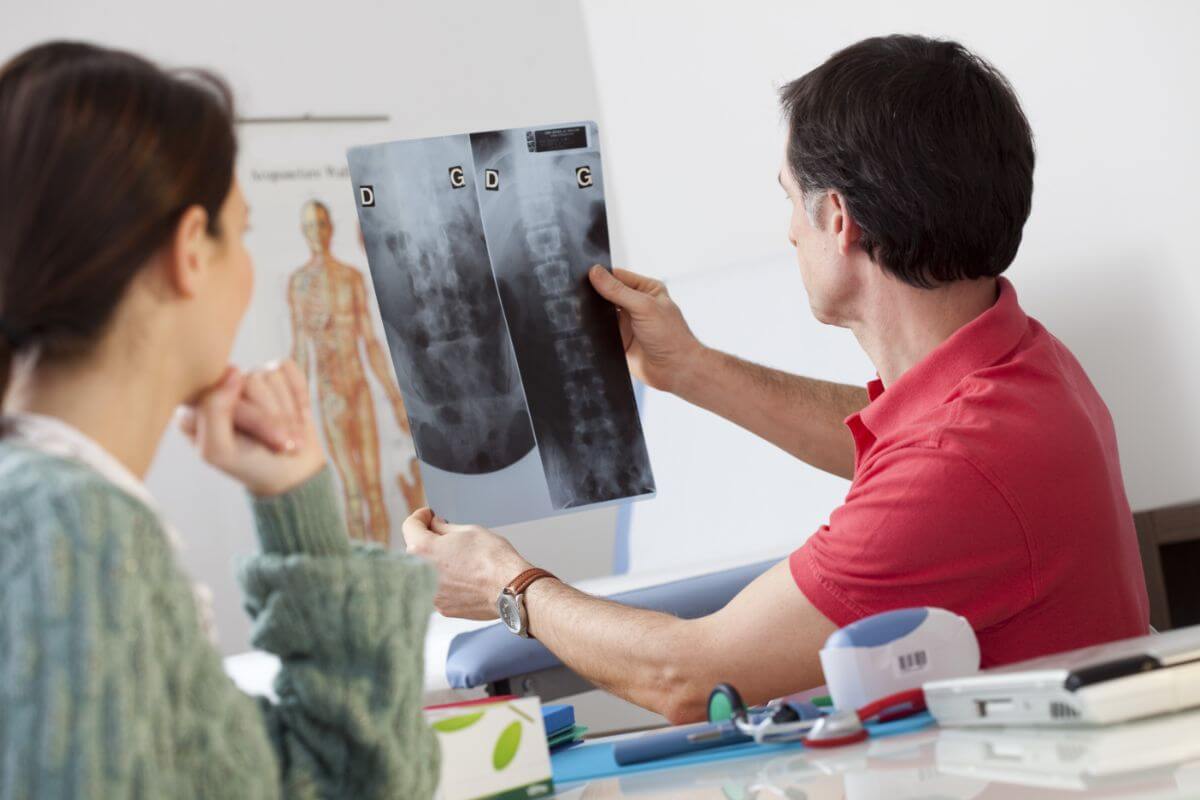Generally traditional spinal surgeries like laminectomy and lumbar fusion involves scars, complete exposure to patient’s anatomy and requires high expertise skills to treat the spinal deformities. But with the rapidly growing advancements, Spinal Navigation Technology has completely changed the treatment modules and it is used by neurosurgeons to perform delicate and complex spinal surgeries. This image- based technology has made things easier for the spine surgeons as now they are able to operate with better visualization and more accurately than ever before.
What is Spinal Navigation Technology?
The image-based technology used in spinal surgery utilizes scans of the patient’s anatomy and instruments that are tracked by the Navigation System’s camera. The specialized software creates a virtual, 3-D model of the patient’s spine, essentially a digital roadmap or blueprint to help guide the surgeon. The surgeon can use this model to plan the details of the surgery including the number, size and location of implants. Much like a GPS system in an automobile, the surgeon is then able to track in real time the position of surgical instruments and implants in relation to the patient’s true anatomy. For this reason, the computer assisted surgery may also be referred to as surgical navigation. Spinal Navigation Technology used during complex spinal surgery enables faster, precise and less invasive spinal procedures in a reduced radiation environment.
What are the advantages of navigation technology?
Similar to what GPS has done for geographic navigation, 3D image- guided surgery has revolutionized the spine surgery. There are several benefits of a minimally invasive spine surgery combined with spinal navigation system as it proves to be beneficial for both the surgeon and patients. This highly effective navigation system assists surgeons with some of the most complex spine surgeries. During a conventional spine surgery, without the use of surgical navigation, surgeons may take multiple X-ray images to verify the location of instruments and placement of implants throughout the procedure while this modern surgery eliminates the need for repetitive X-ray images, helping to reduce radiation exposure to both the patient and medical team. The use of the equipment to pre-plan the operation, such as determining the size and location of screws to be implanted, saves valuable time and uncertainty associated with spinal surgery. Besides, image-guidance may increase a surgeon’s confidence in difficult cases, especially in revision cases where the patient’s anatomy may be changed from previous operations.

Generally traditional spinal surgeries like laminectomy and lumbar fusion involves scars, complete exposure to patient’s anatomy and requires high expertise skills to treat the spinal deformities. But with the rapidly growing advancements, Spinal Navigation Technology has completely changed the treatment modules and it is used by neurosurgeons to perform delicate and complex spinal surgeries. This image- based technology has made things easier for the spine surgeons as now they are able to operate with better visualization and more accurately than ever before.
What is Spinal Navigation Technology?
The image-based technology used in spinal surgery utilizes scans of the patient’s anatomy and instruments that are tracked by the Navigation System’s camera. The specialized software creates a virtual, 3-D model of the patient’s spine, essentially a digital roadmap or blueprint to help guide the surgeon. The surgeon can use this model to plan the details of the surgery including the number, size and location of implants. Much like a GPS system in an automobile, the surgeon is then able to track in real time the position of surgical instruments and implants in relation to the patient’s true anatomy. For this reason, the computer assisted surgery may also be referred to as surgical navigation. Spinal Navigation Technology used during complex spinal surgery enables faster, precise and less invasive spinal procedures in a reduced radiation environment.
What are the advantages of navigation technology?
Similar to what GPS has done for geographic navigation, 3D image- guided surgery has revolutionized the spine surgery. There are several benefits of a minimally invasive spine surgery combined with spinal navigation system as it proves to be beneficial for both the surgeon and patients. This highly effective navigation system assists surgeons with some of the most complex spine surgeries. During a conventional spine surgery, without the use of surgical navigation, surgeons may take multiple X-ray images to verify the location of instruments and placement of implants throughout the procedure while this modern surgery eliminates the need for repetitive X-ray images, helping to reduce radiation exposure to both the patient and medical team. The use of the equipment to pre-plan the operation, such as determining the size and location of screws to be implanted, saves valuable time and uncertainty associated with spinal surgery. Besides, image-guidance may increase a surgeon’s confidence in difficult cases, especially in revision cases where the patient’s anatomy may be changed from previous operations.
Who can be benefitted by this advanced technological system?
The use of image-guidance technology in all types of spinal surgery is rapidly growing. Spinal fusion surgeries alleviating pain resulting from injury, degenerative disk disease, spinal curvatures or arthritis are the most common navigated surgeries. Most people who undergo spinal fusion surgery can have significant reduction in pain and an improvement in performing the common activities of daily living.
How Navigation Assisted Surgery is performed?
Prior to the surgery, the patient undergoes a preoperative CT scan inside the OT after properly positioning the patient, and these images are downloaded into the navigation computer. The software uses these images to build the virtual, 3-D model of the spine. In a process called registration, the surgeon uses Smart Instruments to match predefined points on the 3-D computer model to the patient’s true anatomy.
Once the registration is complete, the navigation camera tracks the movement and position of Smart Instruments in the surgical field and real-time images of the instruments are displayed on the 3-D model. The surgeon is then able to see the exact position of the instruments, aiding in surgical precision. It helps to avoid potential damage to the surrounding tissues and structures such as the spinal cord, nerves and arteries. In spinal fusions, the surgeon may also use the 3-D model to plan the position, length and diameter of pedicle screws, and then navigate instruments to ensure the screws are implanted exactly as planned. This greatly reduces the risk associated with this surgery.
Surgical navigation does not replace the skill of the surgeon, but this enhancement technology provides the surgeon with real-time guidance in placing implants in the spine where visibility with the human eye may be challenging. It’s like driving a nail down a pencil, without breaking the pencil.
Dr. Arvind G Kulkarni heads the Mumbai Spine Scoliosis and Disc Replacement Centre as a Consultant Spinal Surgeon, one of the oldest and largest hospitals of India. He has vast experience in spinal surgery having trained in some of the top spinal centers across the globe including KEM Hospital Mumbai, National University Hospital Singapore, Westmead Adult & Children’s Hospitals Australia, St. George Hospital Australia and Toronto Western Hospital & Hospital for Sick Children Canada. He is one of the pioneers of Minimally Invasive Spinal Surgery in India.

